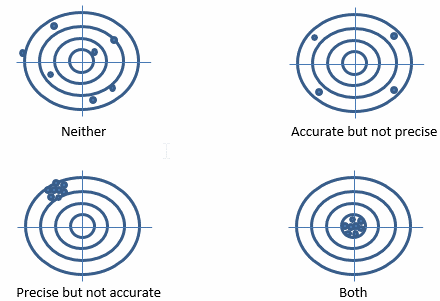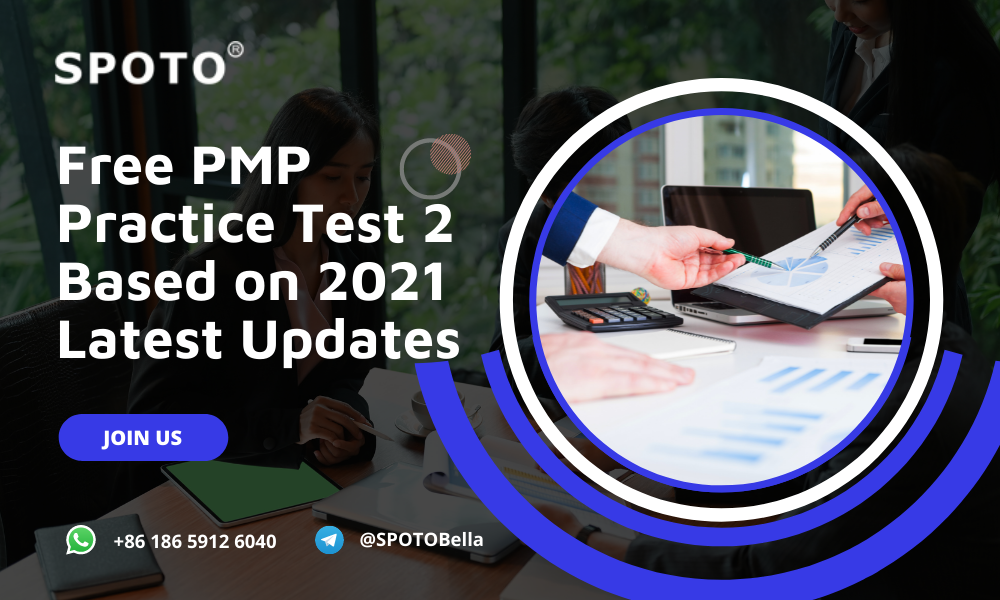If you’re considering taking the Project Management Professional (PMP) exam, you may be wondering if there is a formula for success. Numerous aspiring PMPs are on the lookout for straightforward tips to assist them in navigating the study materials and the exam with ease. Certain individuals believe that if they employ these strategies, they will not be required to study as hard – or at all.
The PMP exam is challenging, and the PMI advises applicants to devote considerable time to reading and studying the material. Consider the most recent PMP exam practice tests, which will provide you with the most accurate simulation of the actual exam. The questions have been completely revised for the PMBOK® Guide’s sixth edition. Begin your exam preparation immediately by taking our complimentary PMP practice exam.
Further Reading:
Free PMP Practice Test 1 Based on 2021 Latest Updates
2022 TOP PMI® Certifications | How to Choose the Right One?
TOP Best Paying Project Management Certifications in 2022
SPOTO One-Stop Service for Passing Your PMP Exam in 2 Weeks!
Earn IT Certification Easily and Simply with SPOTO Proxy Service!
11. You are the project manager for a new product and have a budget of $8 million. You are well into execution and your project is on time, on scope, and on budget. You received a phone call this morning from your project sponsor who expressed concern about the project. According to the schedule baseline, the project should be nearing implementation, but the project sponsor is unaware of the current status of the project. You remind the sponsor that, according to the plan, your status reports are distributed weekly via e-mail. The project sponsor says that e-mail is too impersonal and they prefer a verbal update. This situation suggests problems on which of the following?
A. Stakeholder management
B. Work Performance Reports
C. Performance reporting
D. Communications planning
Answer: D
Reason: The plan apparently doesn’t fit the needs of the stakeholder now or the stakeholder needs have changed since the project was first planned as indicated in the question. The communications plan would have been written according to the communications requirements collected from the stakeholder. Answers B and C are techniques used in communication and nothing in the question suggests that these are contributing to the root problem.
12. A project manager has a team of 26 and the project affects eight departments within the organization. The project is over 50% complete and the project has received high marks on the performance reports from five of the eight departments. The project manager decides to hold a party to celebrate the current success of the project and they invite key stakeholders from all of the affected departments in order to give them an opportunity to communicate the good things happening on the project to the departments that have yet been affected. At the party, the project manager attempts to discover any relevant information that would help the project continue to be, or become more of a success. While walking around they overhear one of the department managers discussing the possibility of setting up more frequent meetings on the project. What is the best thing the project manager should do first?
A. Call a meeting of all department heads to discuss their concerns
B. Redistribute a copy of the communications management plan to all department managers
C. Review the information distribution methods discussed in the communication management plan
D. Record the effectiveness of the party and the lessons learned file
Answer: C
Reason: In this instance the project manager has to deal with one specific manager who, essentially, is saying they are not getting the information they need. All of these answers may be something you would want to do eventually, but the question is asking what to do first. Answer A would take up time from all managers when you only have to deal with the issue of one manager. Answer D would be a good idea but not something the PM would do first. Answer B would not be effective.
13. Senior management of your organization has included an incentive for you to complete the project early. They have promised you part of the incentive fee from the FPIF contract. During the completion of a major component the quality team informs you that the component meets the quality requirements as outlined in the contract but will not meet the level of functionality the customer requires. If this component is late the project will not be completed early. Which of the following is the best action you should take?
A. Inform the customer of the situation and negotiate a mutually agreeable outcome
B. Provide the component as is since it meets the quality requirements
C. Begin developing a list of delays that were caused by the customer
D. Inform the customer the component meets the requirements and insist they accept it
Answer: A
Reason: Answers B through D do not deal with the actual issue and do not have the customer’s interests in mind. The best way to handle this situation is to inform the customer, discuss alternatives and come to a mutually agreeable outcome.
14. You’ve lead your team through the procurement planning process. Several procurement specialists on your team were integral in completing the procurement management plan. You are reviewing a list that you will use to score the bids and award a contract to the best qualified vendor. You want to ensure that you complete this process thoroughly and use all available information to you. Which of the following documents would not be included as part of the evaluation?
A. Request for contract (RFC)
B. Request for proposal (RFP)
C. Request for quote (RFQ)
D. Invitation for bid (IFB)
Answer: A
Reason: Of the procurement documents listed, answer A is not a known document. As part of the conduct procurement process you would be reviewing your outgoing procurement documents as part of your selection and evaluation techniques.
15. The earned value on your project is $150,000, the planned value is $200,000. You’ve actually spent $180,000 to date. What is the efficiency rate of your schedule?
A. $30,000
B. -$30,000
C. .75
D. .83
Answer: C
Reason: The question is asking for your schedule efficiency rate, or the SPI. SPI = EV/PV. Answers A and B is variance information. Answer D is the result of the cost performance index.
16. You are the project manager and are preparing for your quarterly status update briefing with the project’s financial backer. You have prepared some critical path information for inclusion in the status report, as depicted in the table below.
| ID | Work | Duration | Standard Deviation |
| 1 | Construct | 20 weeks | 4 |
| 2 | Install | 16 weeks | 3 |
| 3 | Test | 3 weeks | 2 |
| 4 | Deploy | 2 weeks | 1 |
You are anticipating questions from the financial backer and want to be prepared to answer them accurately. You believe one of the questions will be on the subject of the probability of finishing the project within a range of estimates. If the financial backer asks you for a range of estimates of finishing the project with about a 95.5% level of confidence, which of the following ranges will you give them?
A. 37.84 to 44.16 weeks
B. 34.68 to 47.32 weeks
C. 35.52 to 46.48 weeks
D. 30.04 to 51.96 weeks
Answer: D
Reason: This question is asking to calculate project standard deviation. In order to calculate project standard deviation you must take each of the activities along the critical path and compute the activity variance. You then add all of the activity variances together, and take the square root of that number — this becomes the standard deviation for the project. Since 95.46% (about 95.5%) is the level of confidence of +/- two standard deviations, you then multiply 5.48 X 2 to get 10.96. Since our total duration of this critical path is 41 weeks we add 10.96 for the high end of the range, and subtract 10.96 to obtain the low end of the range.
17. A team member privately informs you that a contractor is making unwelcome advances towards them. Since this is your first major project as a project manager you want to ensure that you handle the situation delicately. The team member stated that they have repeatedly requested that the advances stop using very clear language with the vendor. The team member does not want to upset the vendor due to the high visibility of the project. Which of the following is the best course of action to take first?
A. Arrange a meeting with the team member, the vendor and a representative for your company’s HR department and include yourself as a witness to allow the two to work it out harmoniously
B. Contact the vendor directly to arrange a meeting and discuss the matter between you and the vendor
C. Confront the vendor and threaten legal action if the advances do not stop
D. Suggest to that the team member avoid contact with the vendor
Answer: B
Reason: When faced with situations like this, the best way to discreetly handle it is to hold a meeting with the vendor. Answer A would be incorrect because the team member has told you that they have made very clear that they want the advances to stop. The company’s HR department has no authority over the vendor. When dealing with conflict, project managers take problems head on. Answer C would be the last course of action. Answer D would not take care of the situation at all.
18. As the project manager for the development of a new payroll system, you have many subject matter experts from many different industries working in your project. The chief operating officer (COO) and chief financial officer (CFO) are co-sponsors. The CFO delivers a change request form with a note stating the change will probably result in an additional cost of $50,000 and an additional three weeks to the schedule. The change control board (CCB) will be meeting next week. What is the first thing you should do?
A. Evaluate the impacts of the change
B. Send the form to the change control board
C. Implement the change since the CFO and COO are on the CCB
D. Get buy-in from the team for the change, since you know it will be approved
Answer: A
Reason: Once a change has been identified and documented the next step is to evaluate the change for impacts to the rest of the project. The questions states that the CFO believes that will cost an additional $50,000 and add an additional three weeks to the project schedule, but this does not mean that this will be the actual impact. Once the team has an opportunity to review the change, the project manager is responsible for calculating the impact to time, cost and scope. However, these are not the only impacts that need to be evaluated. Technical impacts must also be evaluated by the team.
19. Last week you were selected as the project manager for a new marketing project, with an international consulting organization. You recently have identified your team and you’re about to have a meeting regarding team behavior, team expectations, and notifying them of the objectives of the project. One team member suggests that a set of rules be written down so that everybody is aware of what is expected of them. Which of the following groups should develop these rules?
A. Project management team
B. Project management office
C. Functional managers
D. The project team
Answer: D
Reason: The project team, which includes the project manager and the project management team, should all be involved in developing the ground rules for team behaviors and team expectations. This not only allows ownership and buy-in of the rules, but the team will eventually become self-governing.
20. You are observing the project team conducting a quality tests on one of your major deliverables. This test is designed to measure the precision and accuracy of the deliverable’s output and the team has charted the outcome in the graph below. The center point of the graph is the target measurement. From the information on the chart below what is the best description of the deliverables output?

A. Precise but not accurate
B. Both precise and accurate
C. Not precise but accurate
D. Neither precise nor accurate
Answer: C
Reason: This graphic depicts an outcome that is accurate but not precise. Accuracy means that the measurements taken have very little variation. In this graphic all the data points are about the same distance from the center of the graph. Precision means that the outcome is tightly clustered together. When taking measurements the outcome can be accurate yet not be precise. Conversely, you can be precise and not be accurate. The outcome could also be neither precise nor accurate, or you can be both precise and accurate. All of these situations are depicted below:

Summary
Bear in mind that attempting the PMP exam solely as a knowledge-based test will result in failure. To earn your certification successfully, you must prepare to answer scenario-based questions and maximize your exam time. SPOTO provides 100 percent authentic exam dumps that are updated in real time to ensure that you pass your exam on the first attempt!


Comments